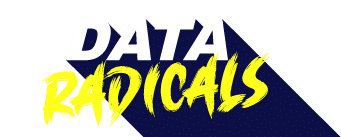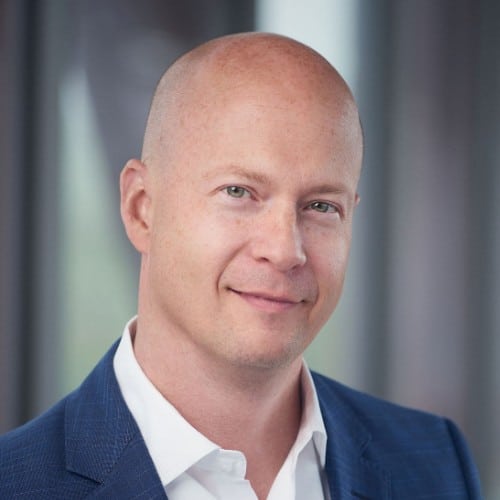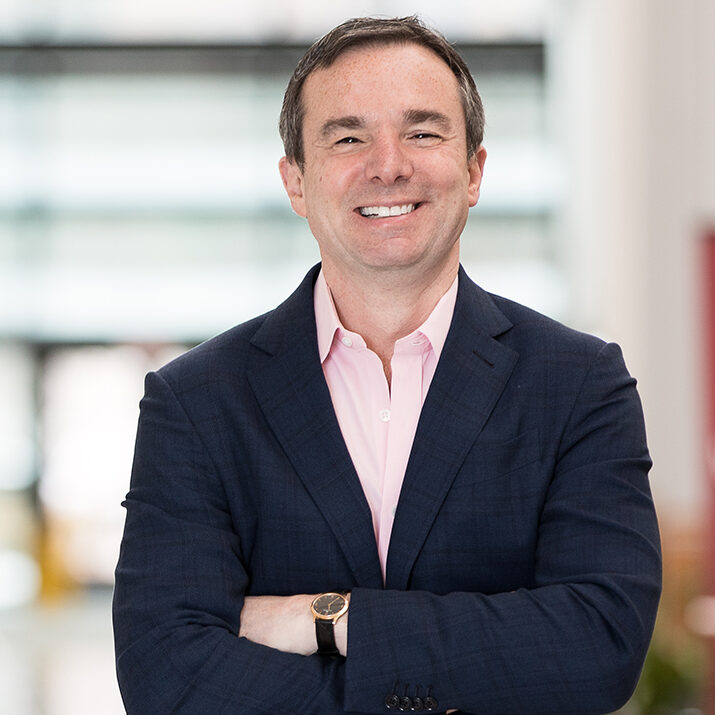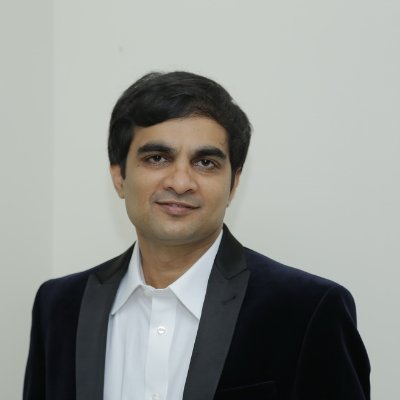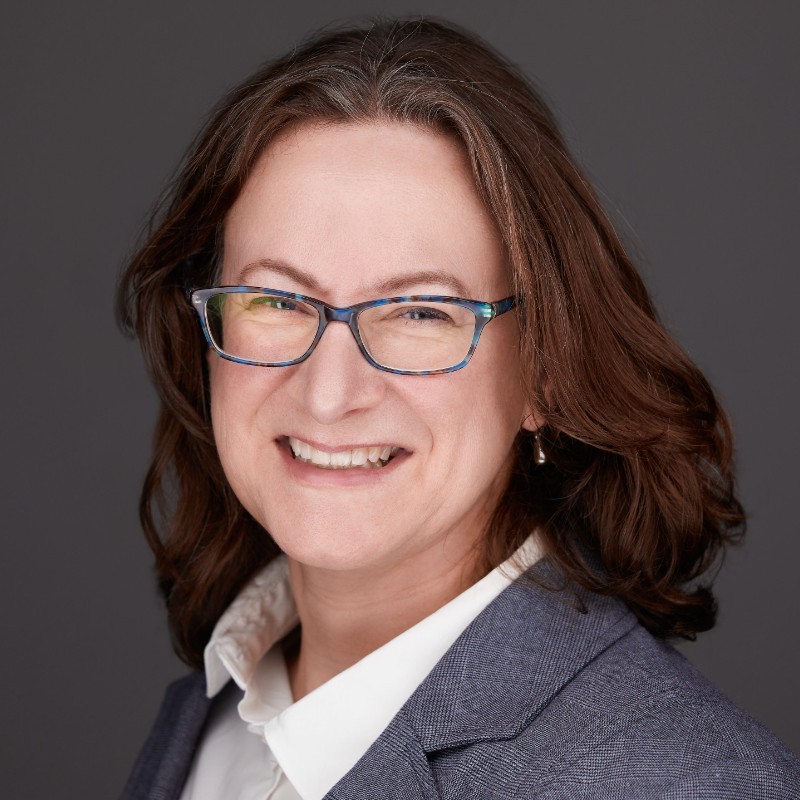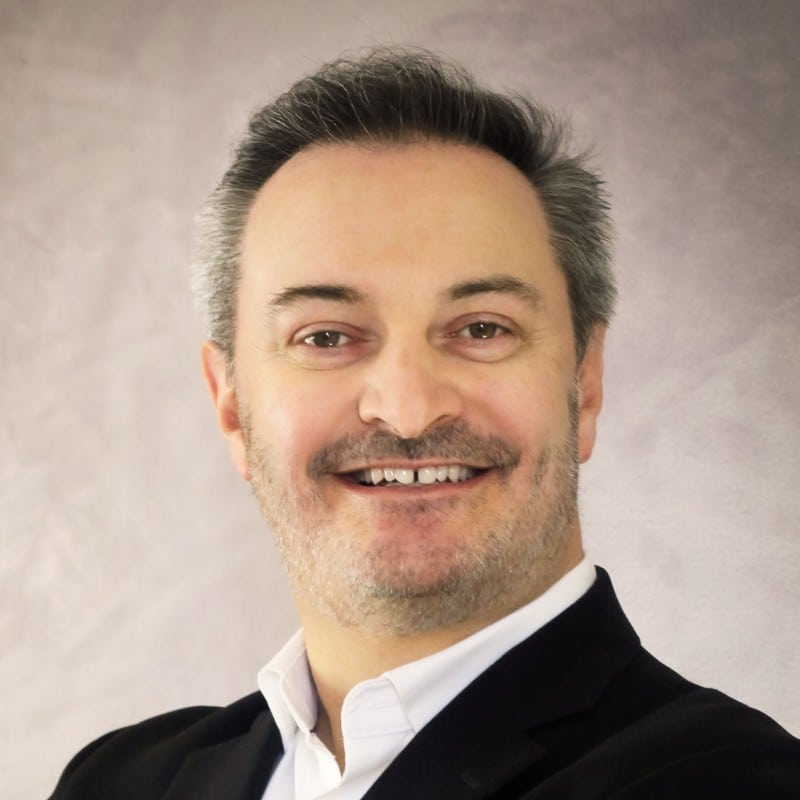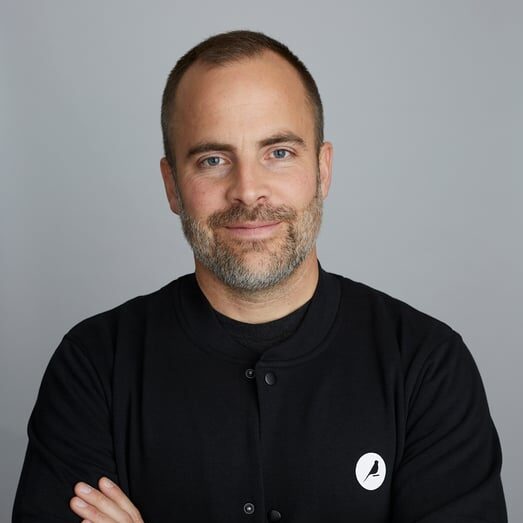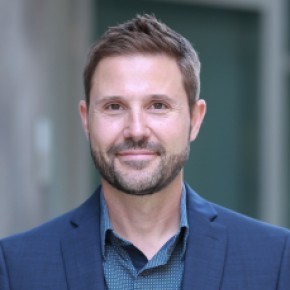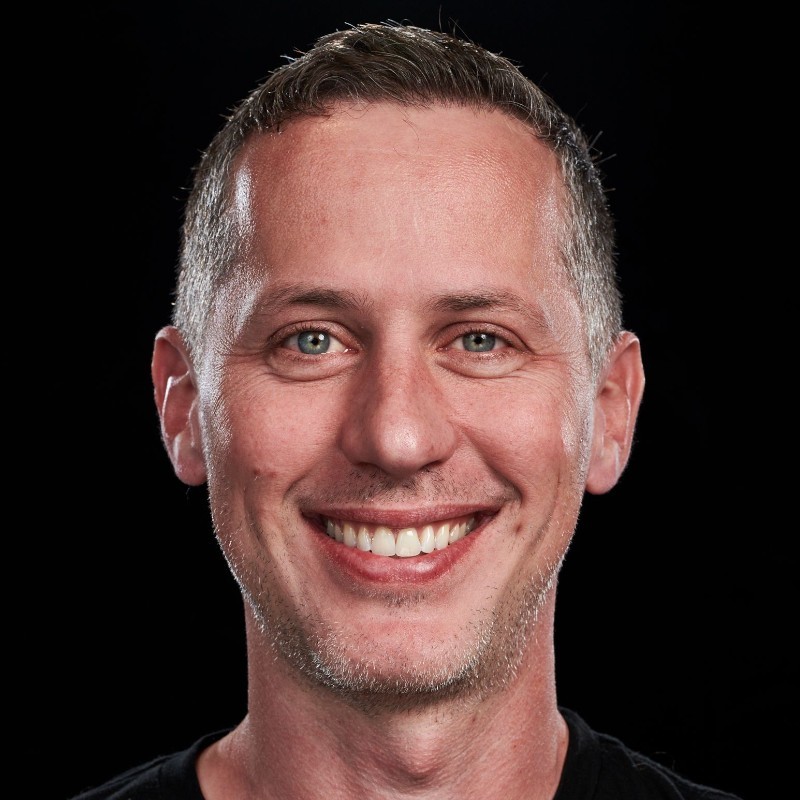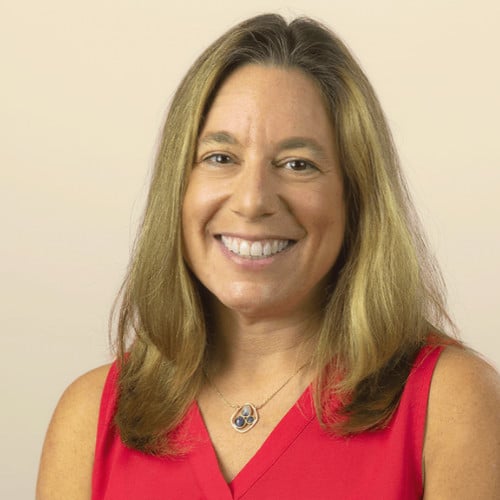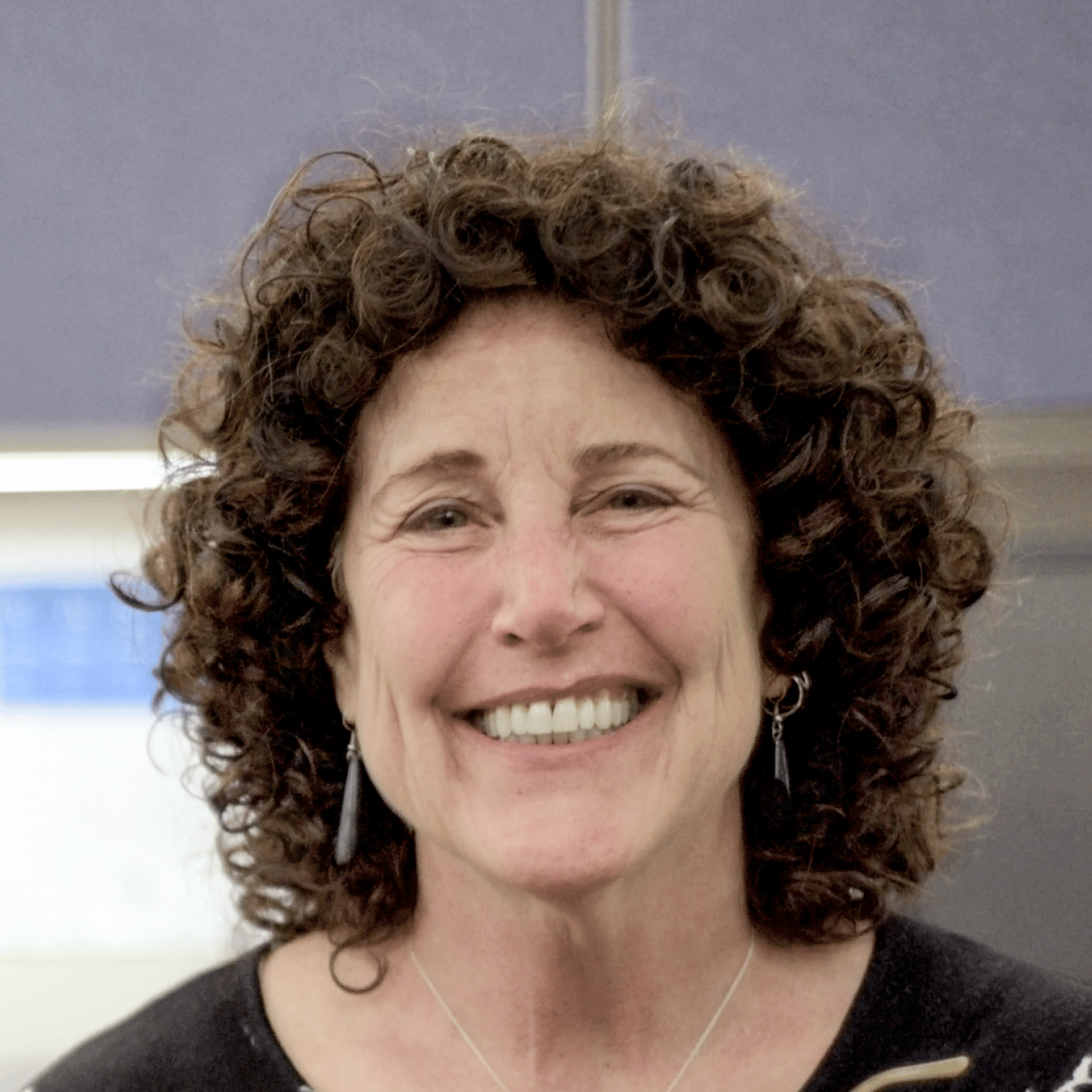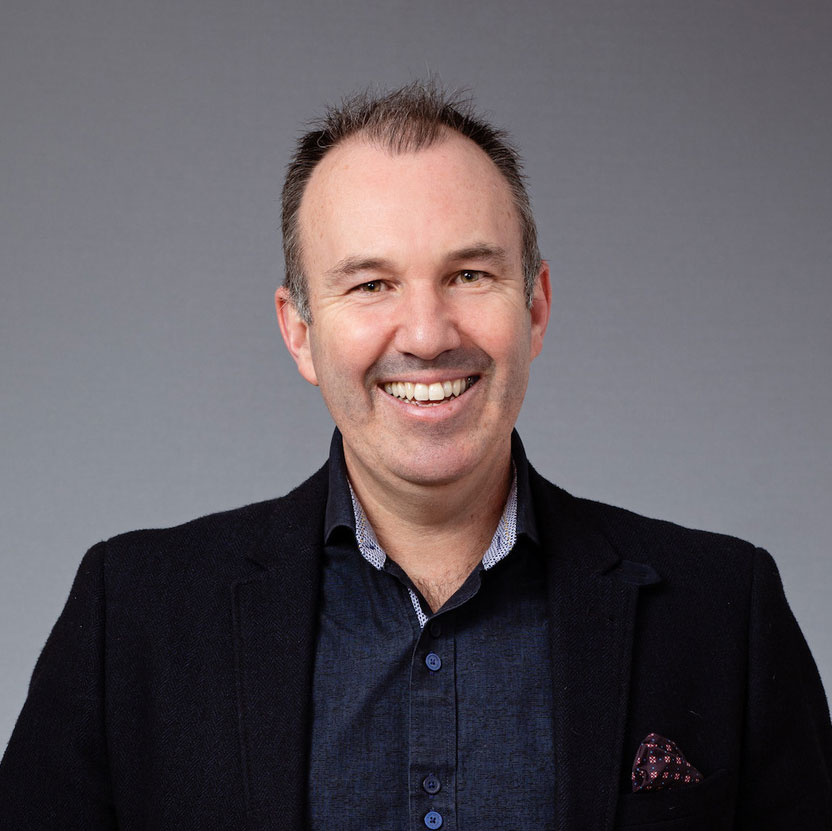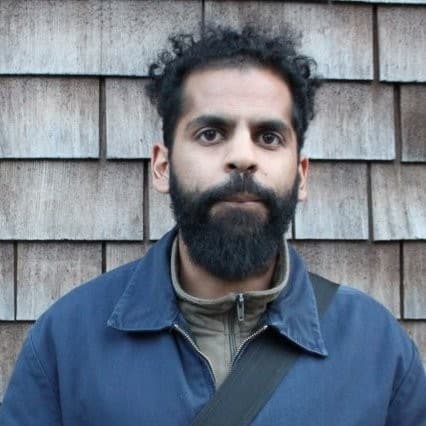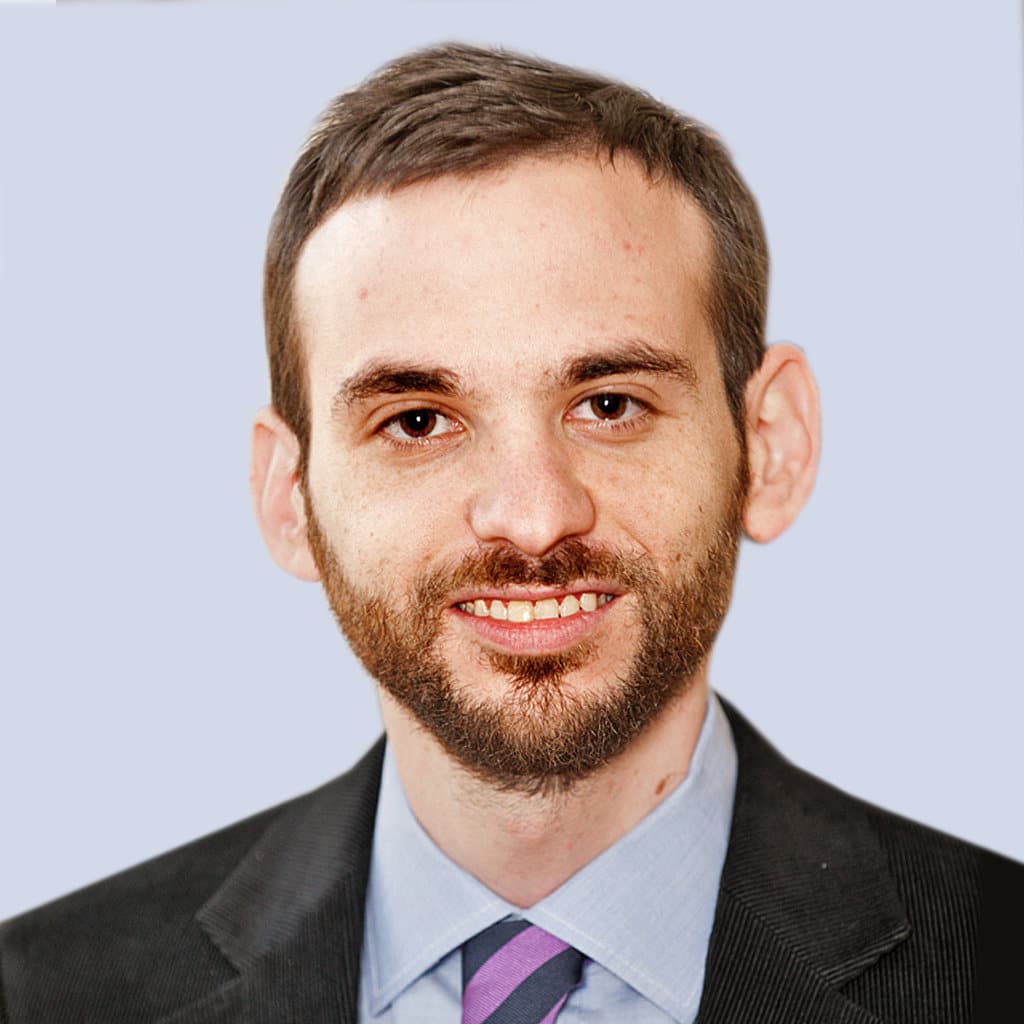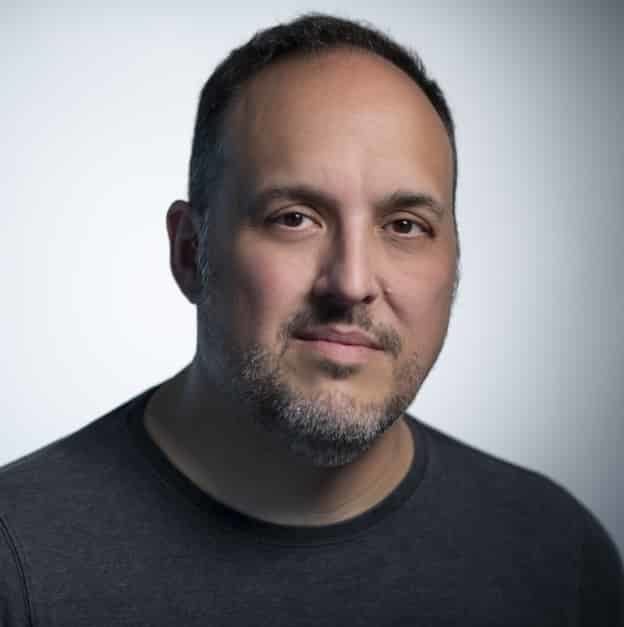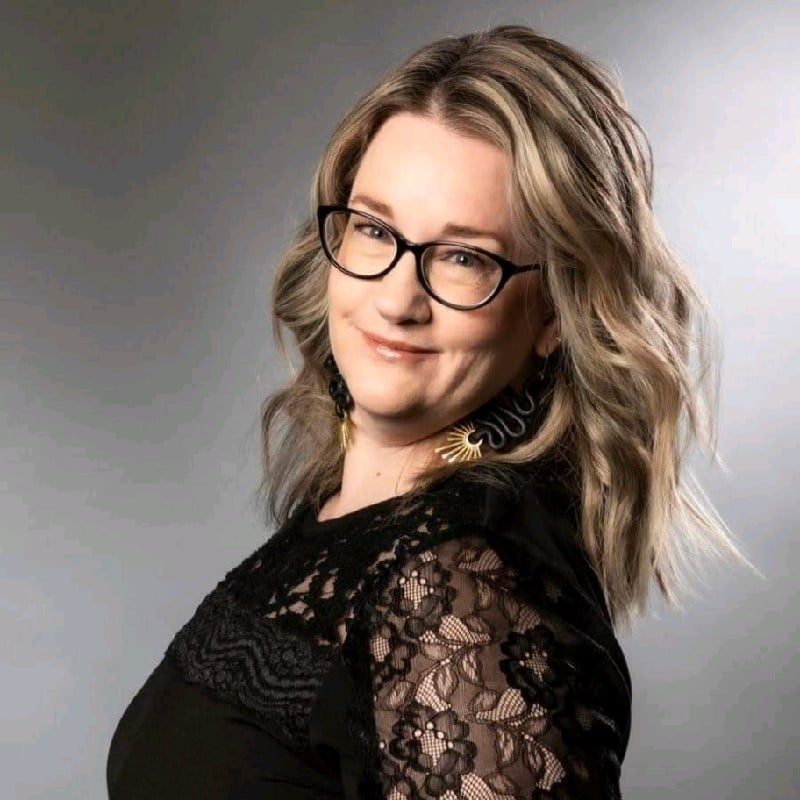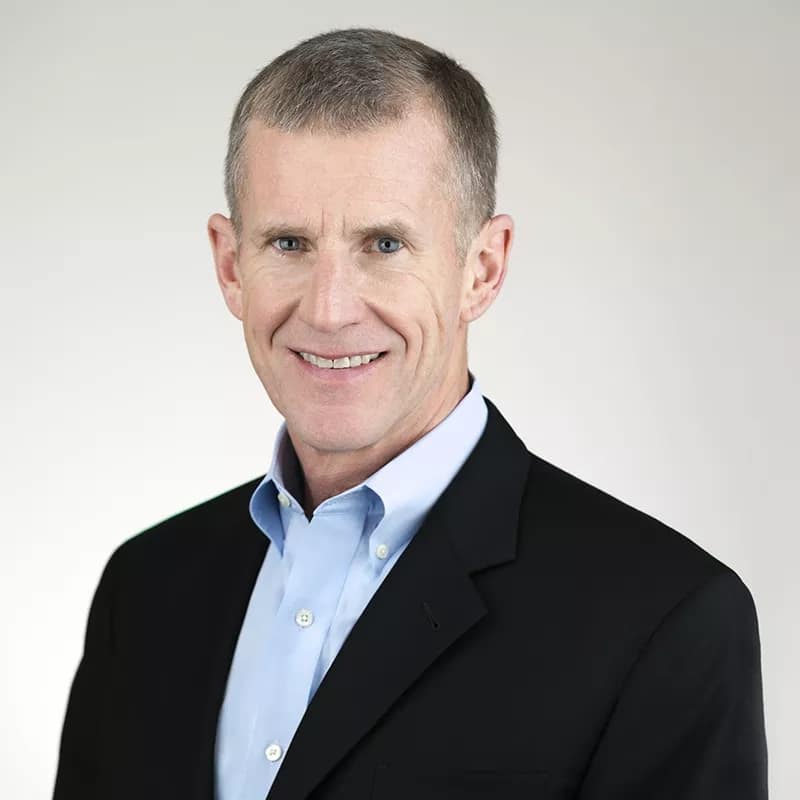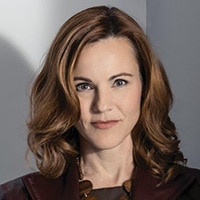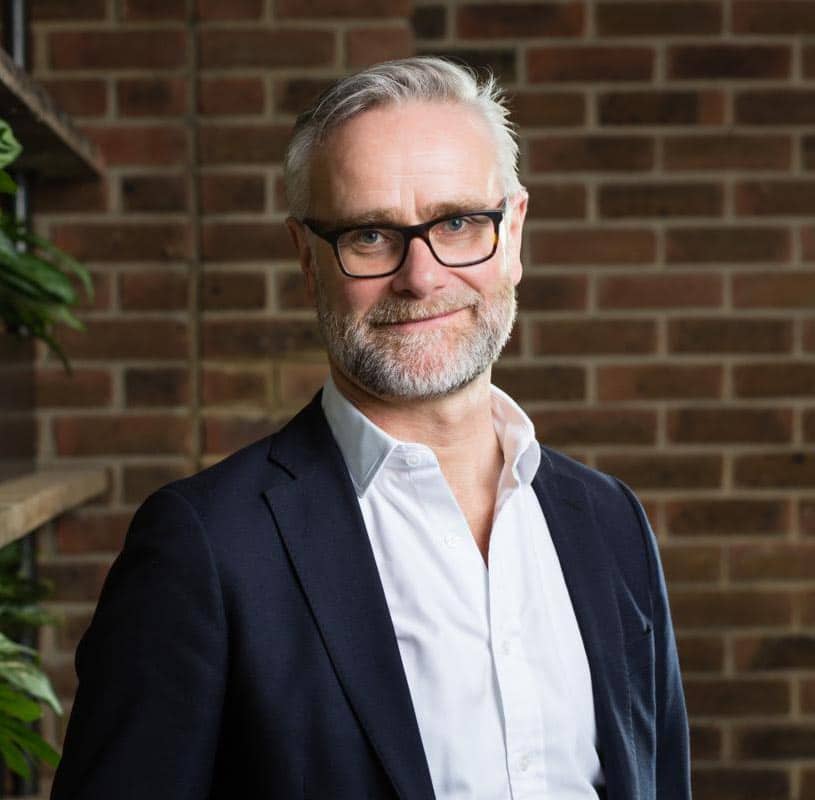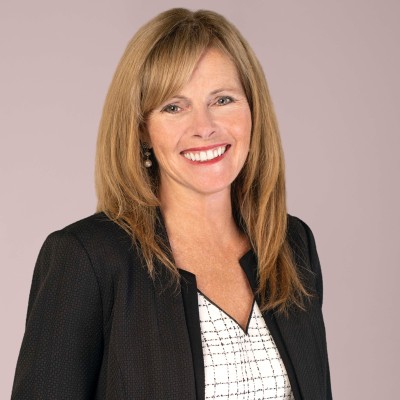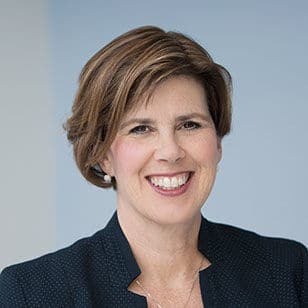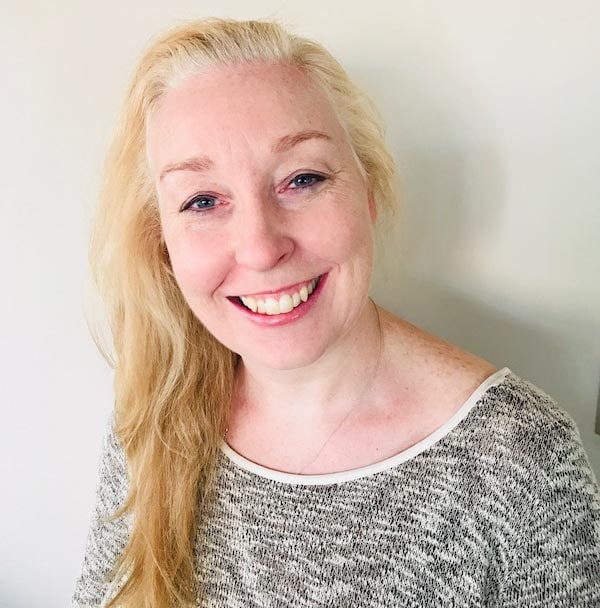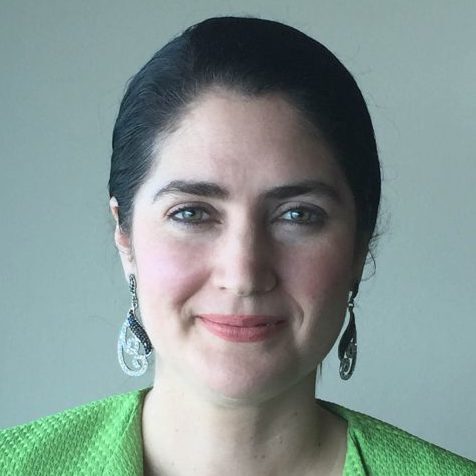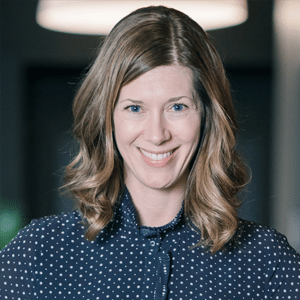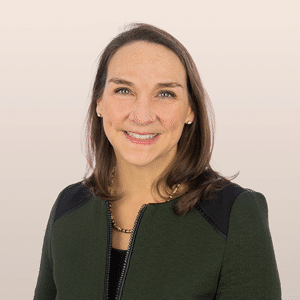Don't Say “Data Literacy”
with Wendy Batchelder, CDO and Data Governance Leader, Salesforce

Wendy Batchelder
CDO and Data Governance Leader, Salesforce
Wendy Batchelder is a two-time CDO and a seasoned and innovative technology executive. She has experience rapidly transforming and scaling businesses through the implementation of solutions impacting top-line growth, operational efficiency, and cost savings, leveraging robotic process automation, AI/ML and data-driven solutions.

Satyen Sangani
Co-founder & CEO of Alation
As the Co-founder and CEO of Alation, Satyen lives his passion of empowering a curious and rational world by fundamentally improving the way data consumers, creators, and stewards find, understand, and trust data. Industry insiders call him a visionary entrepreneur. Those who meet him call him warm and down-to-earth. His kids call him “Dad.”
Producer 1: (00:01)
Hello and welcome to Data Radicals. In today's episode, Satyen sits down with Wendy Batchelder, chief data officer and global data governance leader at Salesforce. In this role, Wendy is helping the right people access the right data at the right time with the right controls. In this episode, Wendy reveals the problem with data literacy training, the power of answering “So what?” questions, and the value of advocating for DE&I in tech.
Producer 2: (00:28)
This podcast is brought to you by Alation. The role of chief data officer (CDO) is more vital and challenging than ever before. Alation offers a vision for building a strong data culture that empowers people to find, use, and trust data. Download The CDO’s Toolbox: 7 Tips for Building a Successful and Sustainable Data Culture, a white paper available at Alation.com/cdo-tools.
Satyen Sangani: (01:05)
So today on Data Radicals, we have Wendy Batchelder. Wendy is the chief data officer for trust at Salesforce. Before joining Salesforce, Wendy was working as CDO for VMware and was responsible for the company's automation, data science center of excellence, business insights, analytical solutions, and delivering excellence in data management capabilities globally, with an annual impact of over $1 billion. She led a team of 600 professionals at VMware, and she's worked at Wells Fargo, Aviva, KPMG, and Ernst & Young. Welcome, Wendy, to Data Radicals.
Wendy Batchelder: (01:35)
Thank you for having me.
Satyen Sangani: (01:36)
So you're like the second Wendy from Salesforce — who's a CDO, who's been on Data Radicals. How does that feel?
Wendy Batchelder: (01:44)
It feels amazing. I love seeing women in the CDO seat and the fact that we had the same name. That's just the best.
Satyen Sangani: (01:51)
Yeah. You've inherited a big job. And then Salesforce has been going through some incredible changes, all of which put a lot of pressure on the data organization. How has it evolved as you've been there and how has it changed through the time that you've been there?
Wendy Batchelder: (02:06)
I had been a chief data officer before, as you mentioned, and so that part isn't new to me, which has been really helpful in this role. I have had the fortune of driving transformation at two other big Fortune 500 companies, but the environment at Salesforce has been evolving. When I came to Salesforce, I spent a lot of time learning the products, learning to go-to-market motion, learning how the different groups interacted and worked together, and also how things were coming into the role, what's the state of the union, and spent time just kind of getting the lay of the land. And what I learned was that we had really great pockets of data management capabilities, really great data analytics embedded in a lot of parts of the business, some more mature than others. I think there's this perception that the tech industry has this all figured out, which is just not the case.
Wendy Batchelder: (02:57)
We're just like everybody else. A lot of the learnings have been, at first I thought having a federated or a franchise data model, I think, is the optimal for strong data management, strong analytical capabilities. But sometimes when you have a strong imbalance between groups or you have a lot of work to do around simplicity, it does make sense to bring groups together. And that's what we've done recently. We've really brought all of the data organizations together and trust central functions so that we can drive efficiencies and streamline behaviors, get everybody on common platforms and tooling and whatnot, which was not what I expected. I thought we would be a little bit more optimized coming in and that we could be federated because I believe in that. I believe in the federated model. But it became clear that we aren't quite at that point. We needed to bring some consistency and simplicity to our model. That's how our strategy has evolved a little bit in the last year and a half.
Centralization vs. decentralization
Satyen Sangani: (03:50)
When you came from VMware, were they in a federated model? And was that where you had acquainted yourself with the federated model or did you go through a similar transition while you were there?
Wendy Batchelder: (04:00)
No. At VMware we had already done the work to bring the data organization together and build the consistent model, so we didn't have to go into that. The substantial lift of the org design to really bring teams together in that way. So that was not consistent between my VMware experience and my Salesforce experience, but I was a part of a similar centralization, decentralization, centralization again at Wells Fargo. I've been through that transition period as well, bringing people together, separating them back out and whatnot. And it is a disruption. I think the hardest part about going through organizational change like that is it does distract people from delivering. Managing that from a change management perspective, managing people and their emotions and their experiences around that is a big part of being a CDO, is managing the people aspect of this. And all change is hard. And I think in this economic environment, people are a little bit more sensitive to it, myself included. The more that I think we can do to help people understand the why behind change is extremely helpful for data professionals, especially, and just keeping people focused. So that's where I spend a lot of my time.
Satyen Sangani: (05:14)
Yeah, and maybe talk through some of those sensitivities. What are the concerns that people have in this environment that might be different from historical environments that you've been in?
Wendy Batchelder: (05:21)
I think there's a real big focus on what's the outcome and how's it impacting. So I've had a lot of conversations both internally and with customers about the value of data analytics — and how do you measure that? How do you really demonstrate that what you're doing is contributing? I think people in the data profession also want that. They want to better understand and articulate how what they do matters for their own benefit, but also to feel like they have justification even if they're not being asked for it. I think in this environment, people are nervous. That's not exclusive to any one industry. I think some of us have seen this before.
Wendy Batchelder: (05:57)
We've been through the 2008 crisis. We see what's happening in the banking industry. We see what's happening in travel. The travel industry is booming, the financial sector is dropping, and just navigating through those changes is hard. Being able to explain how what I do contributes to the bigger picture is something that I think most people are spending more time on and are getting more questions about, that are also questioning is what I'm doing, is it helpful or should I be working on something else? Because data professionals are still scarce. There's still a shortage of talent — that's been abundantly clear throughout my entire career in data that good talent is hard to come by. There's definitely more to be worked on. It's about prioritization and how do you add the most value to the company?
Data strategy at Salesforce
Satyen Sangani: (06:41)
I want to ask you about your data strategy at Salesforce and then talk about how you prove out value in the data function, because I actually think that's a super topical thing. But I wanna rewind back to one of the things that you said, which was that you've been through these centralization, decentralization cycles and people have these Holy War debates about should they be centralized? Should they be federated? And honestly like all things, it's probably, it depends. What does it depend on? What are the signs... Have you been through those cycles? When did you know you had to centralize here at Salesforce? And then historically, when have you known that you're ready to move to a more federated model?
Wendy Batchelder: (07:16)
Yeah, it's so interesting. So I'm actually in the middle of writing a book about data governance and I just wrote a chapter about org model designs. So this is very top of mind for me. I think it depends on what outcomes you're trying to optimize for. If you are trying to optimize for embedded analytics in the business and you want to really democratize data and you have strong data management, a decentralized model — like very decentralized model — can be perfect for that outcome. If you're trying to do things with efficiency and giving consistent solutions for the masses, centralization is really good. And then conversely, if you have an environment where your data management practice is maybe still maturing or growing and you need to spend time building consistent usage of tools, building a data domain model, really deploying your policy, keeping the data management function centralized and maybe keeping analytics a bit more embedded, can be a really great solution.
Wendy Batchelder: (08:18)
And at Salesforce, one of the considerations was how do we optimize our spend in data management? We had this varying degree of maturity across the organization and one of the things we are really trying to do is to increase that maturity and drive consistency and adoption of centralized tooling. Previously we had tools being purchased in different parts of the company and varying degrees of adoption. And so bringing the teams together to drive that consistency to standardization, really rationalizing the experience that all data users could have was one of the main objectives. And so we've made the decision to bring everything together and so far — and it's still early, we just made that change within the last few months — it's been really great because we've uncovered things that were occurring in different parts of the business that we just didn't even know about. So it's been really eye-opening. There's been a lot of that leadership that's come out of that, a lot of sharing of best practices, and I think we're all going to benefit. So, I'm certainly learning every day from the team that we've brought together.
Satyen Sangani: (09:20)
Yeah, that's a super helpful framework. And I guess now that you've done that work of bringing these teams together and prioritizing core centralization, core commonality, what is the strategy that's come out of that work? [Salesforce CEO Mark] Benioff's been super famous about, you're out there and you're like, we now are starting to focus on profitability, which we've never done as a company. And what's the implication for the data function and what your strategy is in supporting the business or what it's trying to do?
Wendy Batchelder: (09:46)
From my perspective, and this would be in any environment, I have a strong opinion, I guess. I've been told that things should be as simple as possible. And in my experience, it is super, super easy to be complicated in this environment. It's really easy to go by all the bright shiny objects. There's a lot of great tools out there. They are interesting, they all serve a different purpose. But at the end of the day, we're trying to accomplish making data easy to find, easy to govern, easy to rinse and reuse, easy to trust, and to be able to be democratized for many and to build that data management tech stack that empowers people to get the data they need when they need it with all the right controls.
Wendy Batchelder: (10:30)
The more simplistic you can make that technology stack, I think, the better. Purpose in the data strategy is to simplify that to the extent it makes sense. I don't believe you're ever going to one tool or one data lake or one environment, but how do you get to the lowest common denominator to still meet your objectives? How do we simplify that, make it as robustly adopted as possible so that you have the — I think about almost a layer cake, like how many layers of the cake do you need? And then how do you get a piece of that cake out to everybody? That's really been my strategy here.
Satyen Sangani: (11:06)
How many layers are you trying to simplify to? And just rough strokes, what are those layers?
Wendy Batchelder: (11:12)
I think about our use of data lakes and our own internal use of our own products. So things like Data Cloud, which we've released over the last year. So how do we deploy that? How do we maximize that deployment? How do we think about our use of things like Snowflake internally, how do we go to a single data catalog? We're both investors and users of Alation. If that's the tool of choice, then everybody needs to be using it. I don't wanna have any other competitive tools in the process. And then we have a few things that are homegrown. Like we have a really awesome data classification tool that my team has built over the years, that was something that predates me at the organization that we've continued to adopt more fully and add on to our other implementations like Alation. So just making sure that we're taking all the good things that we have and we're maximizing the use of them to bring things together.
Wendy Batchelder: (12:01)
I think data classification is a good example. There was another homegrown tool in a different part of the organization. We put them side by side, we looked at all their capabilities and we made a decision, we're gonna go with this tool versus the other one and then we actually retired the other one.
Satyen Sangani: (12:16)
Yay.
Wendy Batchelder: (12:16)
That almost never happens. So yeah, so just making things easier for folks and being very prescriptive about what's available, how to use it, how to engage with it. I think that's where there's still work to do, but just really simplifying it. So I know I didn't give you a number, I don't know that we have the number yet, but just working through that simplification process is our priority for this year.
Satyen Sangani: (12:39)
It's funny, because I obviously look a lot at sort of trends in the data market broadly. And it does feel like in this moment, companies are maybe scaling back or reexamining their investments in data, specifically. And to me there's one obvious driver for that. But one maybe less obvious driver and I'd love to get your feedback on this theory. I think the obvious driver is, look, in a world where you're constrained, spend on data speculative and therefore you're naturally going to always invest in those things that are deterministic in a world where dollars are scarce, or that's at least the first instinct. So I think that's at least one thing, but I also have this theory that people are a little bit drunk on data-tool spend. There's many different data companies out there. It's funny, I've talked to customers who are like, "Well, we have Alation, but there was another team that kind of decided the functionality existed in Alation but we wanted to go along and build something else even though it already existed in what you do." And I've heard that story like five times. Does that resemble your reality?
Wendy Batchelder: (13:37)
Yes. I think, especially in companies that have an engineering soul, if you think about the tech industry I think is probably worse at this. But because almost everybody in the company is an engineer, of course the natural inclination is, "Well, we could build that." And just because you can doesn't mean that you should. And your point is spot on. I was at the Gartner Data & Analytics conference last week. The exhibit floor was a dull roar the entire time. There are so many data vendors in the space right now that you could spend weeks examining every single tool and just counting them. So I think it comes back to: What do you need, what are the capabilities you're trying to deploy in your organization? What's the value of that capability, whether it's going to help you minimize risk or drive operational efficiency or increase revenue?
Wendy Batchelder: (14:29)
And then how do you evaluate each tool against that? I think we get so distracted by, like, "Oh, this is such a cool feature." Is a cool feature going to help you manage risk, drive efficiency, or drive revenue? If not, then “cool features” isn't gonna pay the bills. So focus on the actual needs of your business, the actual needs of your users, and evaluate tools based on that. I think that's where, like you said, we get a little, I think, down the like Chutes & Ladders of the art of possible or what's just cool versus what do we really need.
Satyen Sangani: (15:02)
Yeah. And is that how people get your attention? Because I'm sure everybody's trying to market to you — CDO, Salesforce — but what messages work for you or are you just like, “I'm not even talking to any vendors.”
[laughter]
Wendy Batchelder: (15:14)
I'm trying to have [fewer] vendors. The real thing for me is what problem are you going to solve for me and is it a problem that is a niche problem for a very specific use case or is it a broad problem that really supports the entirety of the business, because we need bang for buck. We're all looking at our spends and saying, "Is this spend worth it or is there a way to maximize ROI in a different way?" And so a corner case or this might be a problem in the future? No one's listening to those stories right now. No one's saying, oh yeah, there's a potential that this thing could happen in the future. You wanna be prepared. Sure. But a recession is not always going to be the right time to spend money on things that could happen. We're all looking at what are the problems we have today and how do we make sure that we're protected against them?
What’s the value — and so what?
Satyen Sangani: (16:01)
Yeah. Let's go back to that value conversation that you were mentioning because you were saying when I talk to people internally and they're trying to figure out what their priorities are, there's always this idea of using data as good and we should use more data, but it's really hard to bridge that. How do you quantify it and what are the initiatives that you're focused on to drive value?
Wendy Batchelder: (16:19)
Yeah. My favorite question when it comes to value is “So what?” And my teams — not just current teams but past teams, if any of them are listening — they're probably laughing because they've been the victim of the “Wendy so-what questions.” But if we're making a proposal or looking at doing something in the business, my first question is, so what? How is this really gonna change anything? Is this going to, again, back to the three, is this going to protect us against a risk or an existing issue? Is it gonna help us save time, money, etc., drive efficiencies or is it gonna give us the ability to drive increase of revenue? And if it's not very clear, then I would send my team back and say, “Try again. What is your business case? What's the value of doing this? What's the cost? What's the expense and how are we going to contribute to the company?”
Wendy Batchelder: (17:04)
A lot of data professionals are not very good at measuring the value of their own experience, which is so interesting and a little bit ironic. We're all data geeks and can't necessarily use data to demonstrate our own value. [chuckle] But it comes down to that: How much is it gonna cost for us to do it? Time, money, tooling, whatever the case is, comprehensive. What's the total cost of ownership? How are we gonna maintain that? What's the risk of not doing it and how is this gonna contribute to the company? And unless you can explain it, you shouldn't do it. That's my, I don't know, “radical” comment about it, but there's always gonna be time and reasons to do innovative things of course. But you can't let “this is a potential” to be the majority of your team's experience. You really need to think about how you drive meaningful, measurable value to the business for the majority of the work that your team does. And then have a ring fence around what is the innovative scope or the innovative experience for your team where maybe that's not as clear, or you're able to safely try things out and to fail fast and whatnot. But ultimately you should be able to measure the value of what you do. And if you can't, I would really challenge one to think why that is.
A focus on operational efficiency
Satyen Sangani: (18:16)
And today, are the business cases that you're seeing in data more aligned to revenue optimization? Are they more aligned to risk mitigation? What's getting funded?
Wendy Batchelder: (18:29)
I think operational efficiency is getting a lot of air time, not just in any one company, but I think in general everyone's looking to save a buck. If you can show how to either maximize talent — everyone's biggest expense is talent, their team, their payroll — if you can free people up to do things that maybe they were not able to be done before, if you can drive automation to make things faster, better, cheaper, that's getting a lot of focus. Other things I hear from CDOs is if you can drive additional revenue, that's always going to be good, but not like a dollar. If you can show, “If we do this thing, it's going to provide an additional couple of million dollars,” no one's saying no to those things. As long as the cost to do it is smaller than the actual revenue unlock, that's starting to get more focus. I think risk avoidance is not getting as much air time as maybe it had previously. We're all just trying to measure our optimization of our resources and trying to find new revenue streams. That's getting a lot of your time now.
Satyen Sangani: (19:27)
And I would imagine faster paybacks.
Wendy Batchelder: (19:29)
Yeah. If you can do it quickly, like in the same quarter in the sales space, that'd be called a “create and close.” If you could make that happen in a quarter, that's definitely appealing. So that's definitely where I would spend time focusing if I was trying to build new business cases. The speed to impact is top of mind for CDOs, CIOs, executive teams for sure. The longer-tail things I think are having a harder time getting funded at the moment.
Analyzing solutions in the data space
Satyen Sangani: (19:55)
Yeah, I can imagine. So you talked about the centralization and I would imagine in the centralization there's a whole bunch of sacred cows that people have had or invested in.
Wendy Batchelder: (20:04)
Sure.
Satyen Sangani: (20:05)
That you are now getting the opportunity to reexamine. And that's one of the things that I've kind of admired about you. I mean, even coming into our relationship, when we first started talking, you were like, “What is this thing and why am I even doing this?” Which I thought was great because at least you said it, where like a lot of executives come in and they see their infrastructure and they think it, but they don't necessarily say it in such a straightforward way. How has that been in this experience? I mean now you've got a whole bunch of business owners who used to own their own data resources and maybe now don't. What are the conversations you're having with them?
Wendy Batchelder: (20:36)
Yeah, and not necessarily just exclusive to here, but just generally anytime you centralize resources, I think folks want to understand “How are you gonna still continue to serve me? How I'm gonna get my needs met?” And in a lot of cases it's interesting because they don't necessarily know what those needs are. It's never been written down or not well defined. And so I think there's a lot of benefit in thinking about, well, let's write down that why, like what is the outcome we're trying to drive? Very similar to when we looked at Alation together when I first came on board: What are the reasons we have this? How is it being adopted? How many users do we have? How many are coming back? We talked a lot about the metrics that we were using to demonstrate success around the platform. There was a previous interest in measuring how many users were signing in even one time.
Wendy Batchelder: (21:20)
Well, one-time users are great, but I wanna know how many are coming back. Are they spending more time in the tool? How sticky is it? Does it have good content? Are people using it or are they just logging in once, taking a look around and then we never see them again. I think it really comes down to, in both cases, what are the things that you're trying to accomplish and how well are you doing against that? In the case of centralization, getting a really good assessment from the stakeholders or the business groups around what do you really need from your data team? How well is that going today? And then checking back in periodically and saying, "Hey, I know we moved your cheese a little bit. Are you still getting the service that you want?" And if yes, great, let's keep doing that.
Wendy Batchelder: (22:01)
If not, let's look at that. Is that because we spent too much time bringing people together and then you got less attention? Is it that we're not being as transparent about what we're accomplishing? Is it a communication issue or is it a delivery issue? Like you're just actually not getting as good a service. So just having that open conversation about expectations, value, experience, I think is super important. And the more open conversations you can have, the better that communication, the better feedback is, and therefore the better the relationship was. I don't know about you, but I felt like after we had that initial conversation about Alation, then we worked on really making sure that the product was well deployed, well used, and our user experience has gone significantly up because we got clear about the objectives and the measures of success. And I don't think that had ever really happened before.
Satyen Sangani: (22:50)
Yeah, I think that's right. And I think you were clear about what you wanted. There's that old quote: “If you don't know where you're going then any road will take you there.” And I think for us as a vendor, sometimes we talk a lot about “We have to give people a journey” but ultimately our customers have to define where they wanna go. And like, we're gonna sell you a tool and we're gonna sell you some expertise and we can give you a community of customers who have done things that are similar to you, but ultimately the customer's gotta know where they wanna be going. That's your job, ultimately. And I think you were very clear about that, which was awesome.
Wendy Batchelder: (23:20)
Yeah, ultimately I just really want all of my stakeholders, everyone that's using solutions for my team, to have a delightful experience. When I think about how we're thinking about our technology stack and our processes and the people and the way that we communicate with folks, I want it to be easy. I want it to be simple and I want it to be delightful. I want it to be, they come in, they get what they need and they leave and there's no friction. And that's very rare, I think, in the data space. But if that's our visionary state, then everything we do, all the decisions we make are against that vision. And that's where I think you can make some really good decisions about what we need to do to make things delightful. And very rarely is data and delight used in the same sentence, but that's always my objective.
Satyen Sangani: (24:04)
And is that how you measure it through stories or how do you measure delight?
Wendy Batchelder: (24:07)
We certainly have KPIs and OKRs that we use to measure delivery, number of users, return-trip duration and tools, things like that that give us a sense for how well we're doing in providing these solutions. But I also look at complaints. Are we still getting the same number of complaints about like, "Oh, I couldn't find what I needed and I'm upset about it." The balance of that, like sometimes if it's quiet, that's also a really good measure of success because people are vocal. They're vocal about their experiences when they're not good, not as vocal when they're positive. So if it gets quiet and you're not hearing as much, that's one of two things. Either people are happy and so there's not as much complaining or everyone disappeared on you and you have no more users. Those data points, those metrics can be really helpful when things get quiet and you're trying to uncover “Are people still using my solutions in a way that I hope they are.” It's good to have that.
Riding the wave of data trends
Satyen Sangani: (24:57)
Yeah. So you mentioned that you were at Gartner, you just came back. Gartner talks a lot about data fabric and everybody talks about data mesh and then there's like DataOps. And how much time do you spend thinking about these trends?
Wendy Batchelder: (25:12)
Not so much. Because, in my opinion, there's always gonna be trends. There's gonna be new technologies and certainly new terms for old technologies. There's also a trend that we've seen a number of times. And so I don't try to get too caught up in the hype cycle and try to spend more time thinking about what's the easiest path to the outcome. Sometimes these new emerging trends or topics or technologies are cool and they might do something different than the last trend that ultimately, sometimes the basics are just fine. And I do think that you can spend a lot of time evaluating tools, evaluating vendors, evaluating products, and that's… time's money. And so time is value. And so does that actually turn into something that is worthwhile? Maybe. But it's a great place to give someone on your team an opportunity to go explore a new product or explore a tool and give you sort of the thumbs-up or thumbs-down, give it a time limit.
Wendy Batchelder: (26:05)
Spend no more than three hours investigating this new trend or this new topic. If you think it's worthwhile for us to dig into, then thumbs-up. Let's decide how we're gonna bring it forward. But don't let your team just have a free-for-all in trends or hype or new solutions because you very easily get distracted and spend all of your time going to demos if you wanted to. I try not to get too pulled into these trends until there's a reason to. There's a viable consideration and a use case for it. Because you could just spend all your time talking to vendors.
Keeping up with connectivity
Satyen Sangani: (26:37)
Imagine you're talking to a whole bunch of would-be founders. Do you think there are areas that you'd wanna see more solutions in or better solutions in that you feel like the market is underserved in? Or do you think it's just an improvement of existing stuff that needs to happen?
Wendy Batchelder: (26:50)
I think the connectedness still has a lot of work to do. Like I think about any product and I mean, pick your favorite discipline, metadata, data, warehousing, data lakes, data framework, pick your favorite term. Connectivity is I think still a big issue. You buy a new product and it's like, okay, how many connectors, how many APIs, how many, whatever the case is, ETL, how many of these things do I need to build? Managing data pipelines is still an enormous overhead. It still costs a lot of money. It's not very fun for the people that have to do it. And it gets almost no glory. It's piping, right? I mean if you think about the infrastructure cost and the amount of time that's spent, making sure those pipelines are up, they're running, that data quality is good, that's not very visible and it is expensive.
Wendy Batchelder: (27:35)
I also think that there's a timeline. CDOs do not have a long shelf life, generally. And a lot of that I think comes down to the expectations are very, very high. The ecosystems are very complicated and you spend a lot of time trying to bring things together, make it all work, make it clean, make it reliable, make it well-governed. And a lot of that comes down to connections and really bringing the environment together, which we all know is a long-term problem. It's not something that can be solved overnight. You can't just like rub a dashboard on it and be like, "Oh look, it's fixed." And so that's an area that I think we still have work to do there because it's still really hard to get things pulled together and to get it pulled together well.
Satyen Sangani: (28:16)
Yeah, I know we have more work to do there. It's funny, I feel like I've been working on connectors for 10 years.
Wendy Batchelder: (28:21)
Right. Is it better?
Satyen Sangani: (28:22)
I think in some ways it is. I feel like the number of issues that cross over is the same, but since the company is way bigger, I guess that's progress. But it definitely feels like you get into any given customer implementation, and the first thing that slows everybody down is connectors and...
Wendy Batchelder: (28:38)
Right. "How many do I need?"
Data literacy denial
Satyen Sangani: (28:40)
And then there's always this problem of, "Well, what should I be connecting anyways?" That's always a hitting conversation, which is that people sometimes wanna connect everything, because they can. And you're like, "Well, do you really need to be doing that?" And like, "Why are you trying to do this?" And going back to your why, so I do think I totally feel that problem. When we first met, you told me that you didn't like the term “data literacy.” I was like, "What? You can not like data literacy. What does that... " [laughter] I was shocked because I'd never heard anybody say that. Tell us more why and why are you such a data literacy hater?
[laughter]
Wendy Batchelder: (29:12)
It's so true, it's like a secret like, "Shh! Don't tell anyone that I don't like the term." It's the term, the reason that the term bothers me is because it comes across sometimes, I think, condescending, and it depends on your audience. No one's gonna sit down with their C-suite and be like, "Okay guys, today is your data literacy training. I'm gonna educate you on data literacy," it's kind of offensive. I'm an executive, I made it here because I understand data, and you don't need to tell me how to read numbers, and so I think the context is really important. But I think the idea of sitting down and running a data literacy program for executive teams needs different language. You can't just sit down and say, "Today is data literacy day, and we're gonna go through this program." I think it's more about how you introduce and use data for your executive team and all the users of data. Within your data organization, you could use the term “data literacy” all day long, everyone will nod, they'll understand it, it makes sense, it's a data term.
Wendy Batchelder: (30:14)
But I think it's the risk of using data terms outside of your data team — literacy and many others — because it sounds like... What's the Peanuts character that's like, "Wah, wah, wah, wah, wah"? That's what it sounds like to your business users, so you have to drop the jargon and get down to what are you trying to explain. And if you're trying to help people to use more data for decision-making, then just introduce the data, don't sit down and say, "Okay, we're gonna talk about data literacy." Because everyone's eyes gloss over and you lose their interest and their attention, and it just doesn't give you a lot of respect. And part of our job as data experts is to help people to use data better, and that's the conversation that should be had. But the second you say things like data literacy like, "Oh man," the tone of the conversation totally shifts, I've sat in those meetings, it's just not good. It really depends how you discuss data.
Satyen Sangani: (31:08)
Yeah, that's a great observation, because data people probably love data literacy because they were just like, "Oh, all these people are so illiterate and dumb," and then obviously the people who are getting called dumb are like, "Yeah, screw off."
Wendy Batchelder: (31:20)
Right. "Excuse me. Right, right. You can't call me illiterate." These are professionals that have a lot of great experience and are experts in their domains, if you come in and start telling them that they're data illiterate, you're offending them, in many cases, they might not tell you that, but they just might not take your next meeting. So, I think the way you approach it is really important, and that's what's important, so I'm a fan of driving data literacy, I'm not a fan of calling it that in the moment.
Satyen Sangani: (31:47)
We had a guest, Caroline Carruthers, who does this chief data officer's course. And one of the stories she loves to tell is about how she was engaging with a business leader who is literally fearful because the data intimidated him, because he didn't know how to use it, but he wasn't excited to admit his fear because that was a vulnerable position for him in his job.
Wendy Batchelder: (32:08)
And he's not gonna pick up the phone and be like, "Hey, I need you to teach me about data literacy." He's gonna pick up the phone and say, "Hey, I got a question about this dashboard."
Satyen Sangani: (32:17)
Yeah. Or even more vulnerable like, "I don't believe in any of your dumb data efforts, so I'm not gonna fund you."
[laughter]
Wendy Batchelder: (32:21)
I've received those calls before, like, “This is all wrong. It's not what I expected.” And then you can have a healthy conversation about that. But if you're like, “Okay, well, let me teach you about data literacy,” then your conversation's going in a different direction.
Driving data literacy — without calling it that
Satyen Sangani: (32:34)
Yeah. So how do you programmatically drive this literacy at more senior levels and even through the rank and file in the organizations? Like what do you call it? What are you trying to do? What are some of the programs that you've rolled out and how do you think about that work?
Wendy Batchelder: (32:46)
There's a couple things that I've done in a variety of companies. One of my favorites was while I was at VMware, when I was a customer of Tableau's, we had this really great experience called Tableau Power Hour. And we had them every other Tuesday. Tableau helped us to build them and we basically did like a show-and-tell of new features, things that were coming out, things that were exciting. That's where Tableau helped us. And it started out as this really small group, a lot of people from within my team and a few people from around the business where we had democratized data teams or federated data teams that were just really interested, like kind of super fans at Tableau. And what we did is we had sort of a show-and-tell experience where folks could get on the list and then they could share their latest product or the coolest thing they were doing.
Wendy Batchelder: (33:30)
And it started out being a small group, interesting group, engaged group. Then it became a little competitive. People started showing up and like working to get on the list and they were showing their latest things. The group kept growing and growing and growing, but it gave us this great community experience where it was no longer just the centralized analytics team that was providing the show-and-tell material. It was groups from around the organization showing the new ways that they were using the product and also getting that bite-size micro training about the new features or things that were coming out. It created this really connected group of people that allowed us to upskill and uplevel the analytics profession broadly across the organization. But it sort of happened really naturally and organically because we didn't say, “We're gonna have analytics training, we're gonna drive analytics literacy.” We just said, "Hey, let's come and learn a little bit and then let's just share ideas." And what happened is we had really great adoption of Tableau, we had a lot of interest in it. My team learned a lot, the disparate groups learned a lot and it just created this great community. To me that is the optimal literacy program because we didn't sit down and tell them we're gonna teach you things. We just did it in very bite-sized chunks and made it fun.
Satyen Sangani: (34:48)
Yeah. And they can choose their own learning journey and decide whether or not they wanted to consume it. Should we do like an Alation Power Hour?
Wendy Batchelder: (34:56)
Yes, I think it would work. I think it'd be really fun to show like, here's what's up and coming, but like small amount of up and coming material and then like, “Hey, I just did this really cool thing using Query Builder or whatever the case is. Here's a neat feature, the neat thing that I did, check it out. What do you think? How can we make this better?” You know, make it fun. But I think it's all about making it engaging. Otherwise they'll come the first few times and then be like, “Oh, I have something else to do.” So it's about making it engaging and valuable.
DEI in data
Satyen Sangani: (35:22)
Yeah. And the domain has to accommodate that level of creativity and that sharing for it to work. So I'm gonna switch gears a little bit because there's another topic that you have been super out front about and really thoughtful about, which is DEI in data. And you've got an incredible backstory. So you have how many children?
Wendy Batchelder: (35:40)
I have a half a dozen children.
Satyen Sangani: (35:42)
You have a half a dozen children.
Wendy Batchelder: (35:44)
It hits different when you say it that way. So I have six kids ages 3 through 12, many in between. But yeah, we've got a loud house. We also have three cats and a dog. So sort of like a partridge in a pear tree. But yeah, we have a big and diverse family. A loud family, can't sneak in anywhere.
Satyen Sangani: (36:00)
Drill in on the word diverse. Can you describe that diversity?
Wendy Batchelder: (36:03)
Yeah. Yeah. Three of my kids are adopted, they're Black. My husband and I are White. I have one child who's trans. And so it's sort of been like a tough time. I think in general because of the way that the political environment is, the economy, there's certainly a lot of big feelings about things and the ages makes it really fun. So I've got one in junior high and three in elementary school and two in preschool. So we're in all different stages. But yeah, it's been tough. We've experienced a lot of discrimination and adversity in our journey and that has led me to just being really more passionate than I was before we went down this path, before my son came out, before we adopted our kids. But you know, it's a lot more relatable. I think now that we have had our own experience and it's been a difficult time, but there's a lot more we can do, I think, in our communities and a lot more we can do in our area of practice to make things more inclusive and diverse and really bring people along on this journey with us. I think we have just a lot of work to do.
Satyen Sangani: (37:00)
Yeah. And I'm sure now as a parent, seeing it on behalf of your kids gives a totally different feeling than obviously just like sitting outside, even as much empathy as you might have. It's just, you can't see things any differently than when you see it through your kid's eyes. But talk about that in the world of tech and talk about that in the world of data, what do you see in your immediate environment? What are the things that are happening that you think could be better, what are examples of where things could be improved, and how do you see that changing in our professional lives?
Wendy Batchelder: (37:29)
I think a lot of it comes down to recruiting and talent management. It used to be that you hired from — especially top firms — would hire from the same universities, the same networks, the same people that they knew. Referrals were a big part of recruiting. What that means is that people are bringing in talent like them from their circles, from their communities that are pretty much the same. You had some organic diversity, but just not really as much as you could possibly want, and certainly not enough to drive the innovation that we know comes from having fantastically diverse teams. One of the things that I've seen work really well is to say, “What do you really need out of this job?”
Wendy Batchelder: (38:12)
You look at job descriptions and it's like, "Oh, I need 15 years of experience and I need a college degree from an Ivy League or whatever." Do you really? Or is someone that has 15 years of on-the-job experience, who has a computer science certification, going to be as good as a computer science graduate from, say, Stanford? Probably, if they have real world experience over a degree, the real world experience is a shorter learning curve than someone who has a degree but has not had any real world experience. So, really thinking about what are you trying to get, what is the outcome you need, and what does success look like in the job: today, in 90 days, in a year, in five years? And then thinking about the requirements. Because I think the job descriptions that we often see have these crazy requirements that don't really make sense. I had that experience, even just, gosh, I guess six or seven years ago, where I had an opportunity that was at the same level that I was currently at, but I was not allowed to apply for it because I didn't have the minimum number of years of experience. And it was like, "You need 15 years of experience for this position."
Wendy Batchelder: (39:20)
I'm like, "Well, I've been promoted into the same level without 15 years of experience. So you're telling me I'm not qualified for my own level?" This doesn't make sense. But it's these arbitrary expectations or guidelines that we've set up, that don't necessarily translate into what we really need, but it's just the way we've always done things. I think just challenging the requirements, thinking about where you're sourcing talent. If you're sourcing it from where you always have, you're gonna get the same results you've always had. Think about the schools you're recruiting from, think about the programs you're recruiting from, thinking about the people in your network, and if that reflects what you're trying to build, and if not, change it. You're not a tree, you can move! Go plant somewhere else, and bring that talent into your team. Don't be afraid to try different things to get new results. I think that's innovation in and of itself.
Satyen Sangani: (40:11)
Yeah, that's all phenomenal advice. Is it the same at senior levels as it is at junior levels, or do you think there's any differences between those?
Wendy Batchelder: (40:20)
That's a really good question. I do think that statistically, there's some variance. I can't speak to the numbers at Salesforce but the C-suite, I think, spends a lot of time looking at diversity, and do we have the right mix? Do we have different experiences, different ethnicities, different religions, whatever the case is, whatever factor you're looking at, do we have that nice combination? And then maybe the level below that is also equally represented, but then there's a dip and the question is why? And I have seen that dip in many places, especially when it comes to gender, where you might have a really good balance of the C-suite or maybe the level below. And then if you look at middle management, there's this shift where there's a lot more male or male-identifying professionals in those middle management layers and less women. But then if you go back to the more entry level, it's more balanced again.
Wendy Batchelder: (41:11)
And there's something happening there. And I think part of that is the theory of the missing rung where like the first promotion for women is generally hard. And I think that comes through a lot of unconscious experiences. One example I give, I sat in a review meeting once upon a time, and we talked about a female as being like, “aggressive” and she'd do anything to get things done and she's just, she's got some sharp elbows or what have you. And then we described the exact same behavior for a man, but it was, “He's assertive and he will do anything to get things done.” But it was in a positive tone. I was like, "Okay. Time out, guys. We were talking about the same exact role, same exact behaviors. We said it about the female as negative, and we said it about the man as a positive thing. What am I missing?" And it was like, "Oh my gosh, you're right." I think it's on all of us to be identifying these places where there are problems and the way in which we are managing our talent, and how do we make those differences simply by shining light on them? I think that goes a long way. So just watching for the unconscious bias.
Wendy’s key mentors
Satyen Sangani: (42:12)
Yeah. Which I mean takes leadership and mentorship. You've mentioned to me that you've had a couple of key mentors in your career. Who are those people and what impact did they have for you?
Wendy Batchelder: (42:23)
Really significant impact is the short answer to that. I had some really fantastic mentors early in my career, when I was by far the most junior person in the room — and what I mean is the youngest person in the room. We were surrounded by people who had twice the professional experience I did but were peers, which can be a really intimidating situation. But one really remarkable mentor of mine is Charles Thomas. He pulled me aside when I was at Wells Fargo, and basically gave me a little pep talk one day. And it was, "Wendy, there's a reason that you're in that room. There's a reason you're there. You come in without an agenda, you're just trying to solve the problem. And that's not true for everybody here. And so don't forget that and lead with that because that is your special superpower." That conversation that moment has stuck with me for a long time.
Wendy Batchelder: (43:14)
I still call Charles when I need advice to this day. He's over at Meta now, having a good time. He was really a powerful influence in me believing that I deserve to be in that room, and that I had every reason to be an equal party to anyone else, even though I was far more junior in my tenure than anyone else, that there was a reason that I was there. And I didn't necessarily know what that reason was, but he called me on it and it really helped me. Another key mentor of mine was Stephen Harris. He and I worked together at Wells Fargo and at VMware. I succeeded him as CDO at VMware after he moved on to Microsoft. And he's always been a big supporter of mine, and someone who's advocated for me and really empowered me to make decisions and recommendations and cleared a lot of hurdles for me and then stepped back and let me excel.
Wendy Batchelder: (44:03)
I learned a lot from both of them that I've emulated in my own leadership over the years. I think it's important to know that really, thinking about all the mentors in my life, almost all of them have also been minorities. I think that says a lot about the way people think about their own experiences and are trying to make a difference for those coming up behind them. And that's really important for us all to think about: How do we continue to give back so that we're paving the way for the next generation behind us?
Lessons from the diner
Satyen Sangani: (44:32)
Yeah, and I think an instructive lesson for people who may be in a more privileged position, maybe look out for your own biases and figure out who you're mentoring as well, because it may not be that individual. You were once a waitress and bussed tables, is that right?
Wendy Batchelder: (44:45)
I would have never made it to waitress status. I just bussed tables. But yes, that was my first job. Bussing tables at a 50s diner.
Satyen Sangani: (44:52)
So the question is what did you learn bussing tables that you use as a CDO? In terms of connectors and bridging connections, this is gonna really test you.
Wendy Batchelder: (45:01)
Yeah, that's a great question. So this is gonna date me a little bit, but when I bus the tables, you could still smoke in restaurants. And one of the most disgusting things people did was they would take their cigarettes and put them in their food instead of using the ashtray. It was right there on the table. Do you remember this?
Satyen Sangani: (45:18)
Gross.
Wendy Batchelder: (45:19)
It was so gross, but the lesson was people are people, and they will do what's convenient for them. The extrapolation to the data space is, people will put data wherever they can, even if it's gross or it's not well controlled, or it's not what they should do, and so we have to watch for that. How do you encourage good behaviors, and how do you make sure that you're giving people optimal experiences? Like my lesson in bussing tables was, you get that plate out of there as soon as someone's done so they don't mess around with it afterwards. Same thing with data. How do you get people the access that they need when they need it, and then how do you make sure that once the task is done, that you're taking care of it so that they're not tempted to go back to that not-authorized position or not putting data in a server under their desk? How do you control for that human behavior which is, “I need things to be convenient for me and not thinking about the greater good or the greater experience.” I think that's one of the biggest challenges we have. You can't control everything. You have to incentivize good behavior, and that's really hard because people are people. They're gonna do things that are helpful for them, not necessarily think about what's good for everybody.
Satyen Sangani: (46:31)
Nice. You know what I thought you were gonna say? I thought you were gonna say sometimes it's okay to break a little glass or something like that.
[laughter]
Wendy Batchelder: (46:37)
Oh no, that would've been way more clever. But no, people do whatever they want and so, you just have to figure out what's driving that behavior, and how do you adjust.
Satyen Sangani: (46:47)
Yeah. Wendy, you've become an incredible friend and it's always great to talk to you. Thank you for coming on the show and thank you for taking the time. I know everybody's gonna enjoy it, and we'll see you soon again.
Wendy Batchelder: (47:00)
All right, sounds good. Thank you again for having me. It was a great conversation and it's good research to know that my first job was bussing tables, so I commend you on that.
Satyen Sangani: (47:10)
Awesome. Have a good one.
Wendy Batchelder: (47:12)
You too!
[music]
Satyen Sangani: (47:18)
Wendy's observation about data literacy is clearly born out of experience, combined with a lot of empathy. Instead of focusing on how people's skills might be deficient, she instead frames the conversation around how folks across the organization leverage data to do their jobs better. Her approach embraces show-and-tell, something all of us have done since school days. People come together to learn, share ideas, and even get a little competitive. You don't always need to talk at people to enable them. Often, there are better ways to engage. So thank you for listening to this episode, and thank you, Wendy, for joining. I'm your host, Satyen Sangani, CEO of Alation, and Data Radicals: stay the course, keep learning, and sharing until next time.
[music]
Producer 2: (48:04)
This podcast is brought to you by Alation. Subscribe to our Radicals Rundown newsletter. You'll get monthly updates on hot jobs worth exploring, news worth following, and books we love. Connect with past guests and the wider Data Radicals community. Go to alation.com/podcast and enter your email to join the list. We can't wait to connect.
Subscribe to the Data Radicals
Get the latest episodes delivered right to your inbox.
